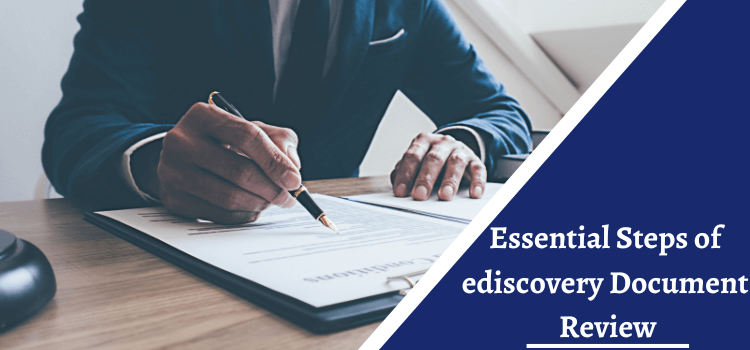Electronic discovery, or ediscovery, is the critical process of identifying, collecting, and reviewing electronic data in litigation or investigation. Document review is essential in ediscovery, where attorneys review electronic documentation to determine potentially relevant information.

Invariably, ediscovery document review contains specific steps to ensure a streamlined approach to each legal matter. Nevertheless, new attorneys or those unfamiliar with this process might be confused about where to begin and how to proceed.
The following steps can be helpful for such individuals, enabling them to complete the review successfully without any hassles.
1: Understanding the Scope of the Review
The foremost step is to understand the scope of the review. It includes the type of documents that need to be reviewed, the date range, and the search terms that can identify potentially relevant files. Understanding this process helps determine the resources required for the review, such as the number of reviewers needed, the platform, and the time necessary to complete the study.
2: Collecting the Data
One can collect data from various sources, such as email systems, file servers, laptops, and mobile devices. It should be collected carefully and dilligently to ensure its authenticity and integrity. The collected data should be stored securely to prevent alteration or loss.
3: Processing the Data
Once all the data is collected, it must be processed to make it reviewable. Processing involves converting the information into a format you can load into a review platform. The data is also de-duplicated, filtered, and searched to remove unnecessary details and identify potentially relevant documents.
4: Reviewing the Documents
Reviewers analyze each file to determine its relevance to the case. The platform provides tools for the check, such as search filters, coding panels, and analytics. Reviewers can apply each file’s coding decisions, such as relevance, privilege, and confidentiality. The process may also involve quality control checks to ensure consistency and accuracy in coding decisions.
5: Analyzing the Data
Analytics tools can help to identify patterns, trends, and relationships in the data. For example, one can use email threading to group related emails together to provide a more comprehensive view of the conversation. Concept clustering can help group similar documents based on their content. Analyzing these files can provide insights into the case and help to identify potential evidence.
6: Producing the Documents
The final step is producing relevant information to the opposing party or the court. It involves exporting them in a format that meets the production requirements. They are usually produced in a load file format that includes metadata, such as the document’s date, author, and recipient, and the coding decisions. The production should be reviewed to ensure it is complete and accurate.
Selecting a Good Software is Key
Selecting the right software for ediscovery document review is crucial to the success of the electronic discovery process. Although various platforms offer different features and functionalities, it is vital to consider factors such as the size of the review, the complexity of the case, the budget, and the user-friendliness of the software.
Ensuring the solution complies with the necessary security and data protection regulations is also essential. A thorough evaluation of the options can help you find the right one for the job. Lastly, partnering with a trustworthy and reputable software provider can help you access the most sophisticated intelligent solutions for your needs.






Leave a Reply